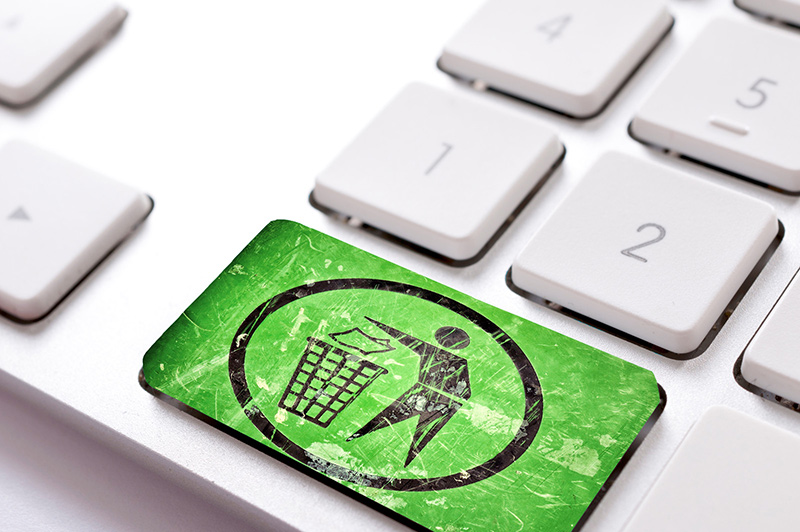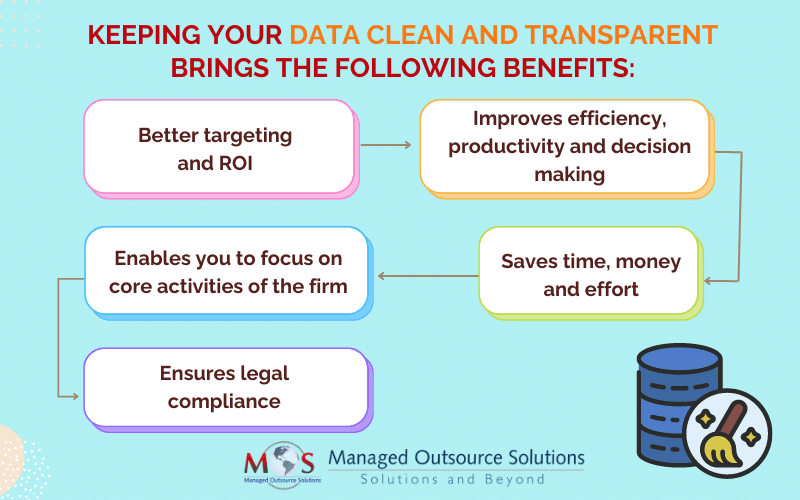As businesses functioning in various sectors largely rely on data for proper decision-making, having clean and quality data is essential. Poor quality or outdated data is identified by inconsistencies, errors, missing information, and can lead to inaccurate analysis, security concerns and a negative impact on your business reputation. Data cleansing helps maintain high data quality. Identifying and validating data quality issues at an early stage helps improve operational efficiencies, as well as manage financial losses and missed opportunities. Data cleansing services provided by reputable providers include identifying and correcting inaccurate data in a dataset and improving the quality of data in the long run.
Importance of Keeping Data Clean
In simple terms, data cleansing is the process of correcting or removing inaccurate and corrupt data. This process is vital, particularly for businesses that deal with huge piles of data. It can deal with discrepancies and errors in both single source data integrations and multiple source data integrations.
Irrelevant data include duplicate records, lexical errors, misspellings, domain format errors, missing values, cryptic value and abbreviations, and contradictory data. Data cleansing involves going through all of the data within a database and either removing or updating information that is incomplete, incorrect or irrelevant data compiled in one area. A business can expand this option furthermore by eliminating the data records that are not really necessary for certain business processes. While what gets filtered out depends on the discretion of the business, some basic points like outdated data or details that are not verified can be removed. The data cleansing process is usually done all at once and it can take quite a while if information has been piling up for years. That’s why it is important to regularly perform data cleansing. On the other hand, how often a business should cleanse depends on how much information they have and a variety of other factors.
Want to learn how data cleansing can influence better decision making?
Read our blog post on
How Data Cleansing Supports Better Decision Making and Business Outcomes.
Data Cleansing Tips for Businesses
When data cleansing is performed, all outdated or incorrect information is removed -retaining only the highest quality information. This ensures that the business team does not have to wade through countless outdated documents and employees can make the most of their work hours. In addition, correct information also helps reduce unexpected costs. For instance, businesses may print incorrect information onto company letterheads and realize it must all go to waste once that error is found.
Now that we have discussed what data cleansing and its relative importance, it is important to understand how to start the data cleansing process. With data cleansing, there is no one size that fits all. Data cleansing methods depend on the type of data businesses have or deal with.
Here are some general tips that could help businesses start the data cleansing process –
- Develop a Data Quality Plan -Setting expectations for your data is an important step in data cleansing. Create data quality key performance indicators (KPIs) and develop a plan to keep your data clean. Identify the key areas wherein the most data quality concerns or errors occur. Identify the root cause of incorrect data and develop a plan accordingly to ensure the health of your data.
- Assess Your Data -Data cleansing usually involves cleaning data from a single database, such as a workplace spreadsheet. For instance, if your business information is already organized into a database or spreadsheet, it is quite easy to assess how much data you have, how easy it is to understand, and what areas may need updating. If the data is currently in individual files and spread across the system, it is important to compile it all so that the data assessment process can be started as soon as possible. This initial assessment can help businesses get a better grasp of how much data cleansing must be performed.
- Clean Data in a Separate Spreadsheet -Before making any specific changes in data, it is important to create a copy of the spreadsheet and make any changes within the copy instead of the original. This helps to secure or protect the crucial business information in case any mistake or error occurs. When working with company or business information, a single mistake can be serious. Once the process of cleaning up all the data and information is finished, you can copy the updated sections back to your original spreadsheet. Even though this can consume a bit of extra time and effort, it will be worth it.
- Make Use of Functions -Generally, it can be quite difficult to clean up every single error or outdated piece of data manually. For instance, when working with a spreadsheet, make use of functions and let the program work for you. If Microsoft Excel is used for data entry, there are many “functions” to choose from that will actually do some of the cleansing process such as removing duplicates. In addition, there are several data cleansing software options that help to properly cleanse data.
- Standardization and Normalization of Data -Data standardization and normalization will ensure the consistency of data throughout the database. Before cleaning data, check important data at the point of entry. This ensures that all information is standardized when it enters your database and will make it easier to catch duplication or other data inaccuracies or errors. Try to create a standard operating procedure (SOP) as this will ensure that only quality data is entered or accessed at the point of entry.
- Verification of the Accuracy of Data -Validating and verifying the accuracy of data in real time is an important aspect. Verify records and match them against up-to-date sources of information to validate the details and ensure accuracy. For instance, there are some great tools for cleaning data, such as list imports. Find data hygiene tools that offer email verification. Effective marketing occurs when high-quality data and tools are used to seamlessly merge various data sets.
- Identify Duplicates -Duplicate data records in CRM may waste your efforts and involve higher costs. Duplicate data records can damage brand reputation and guarantee a bad experience for customers and cause inaccurate reporting. Take adequate steps to avoid data dupes. In short, ensure healthy data entry, validate it, and scrub it for any duplicates.
- Easy Data Mapping -In order to ensure that your data is being cleansed with accuracy, it is important to correctly map data from source(s) to transformation(s) and then to the destination(s). Tools featuring a code-free, drag-and-drop, graphical user interface can support such functionality. Easy data mapping also enhances the usability of a data scrubbing tool.
- Update Data -In a competitive world, business organizations need to constantly update their database in order to maintain integrity, validity and add value to their ongoing business process. It is crucial for them to have a database that is clean, accurate and consistent. Identifying missing details and updating related information can ensure reliability of data.
Data cleansing ensures that the information in an organization is complete, current and accurate.
Get started on optimizing your data quality and gaining a competitive edge in your industry.
In a competitive world, businesses have to constantly update their database in order to maintain integrity, validity and add value to their ongoing business process. Only with clean data can they benefit from analytics and useful business insights. The role data cleansing companies play in this regard is very significant. In the current business scenario, businesses must become innovative and re-evaluate how they are managing data to enjoy the rewards and beat the competition.





